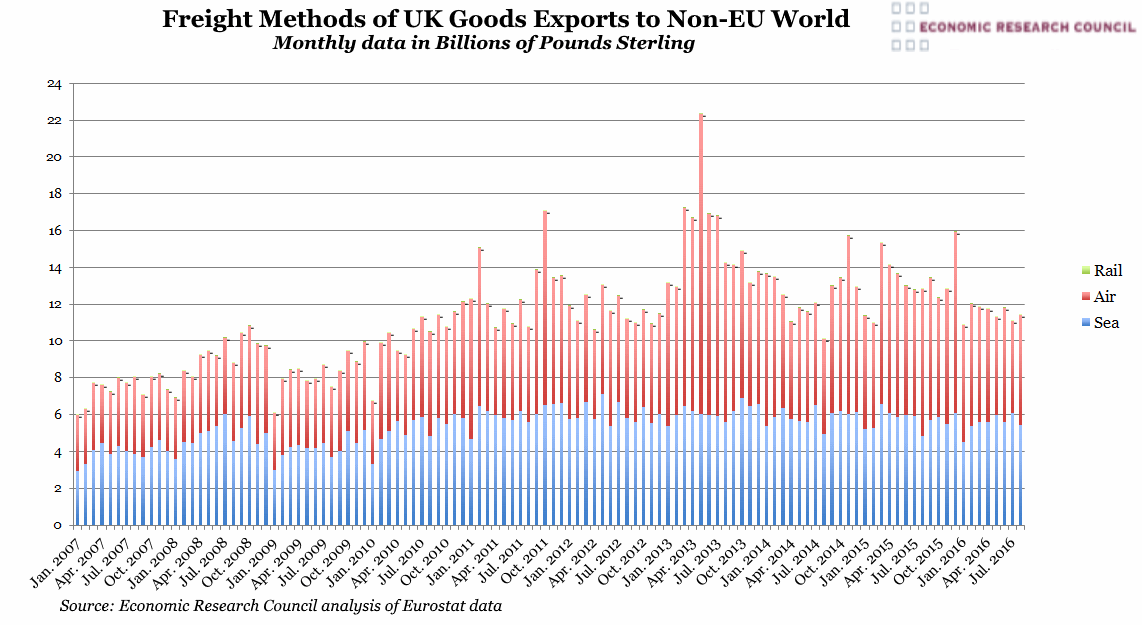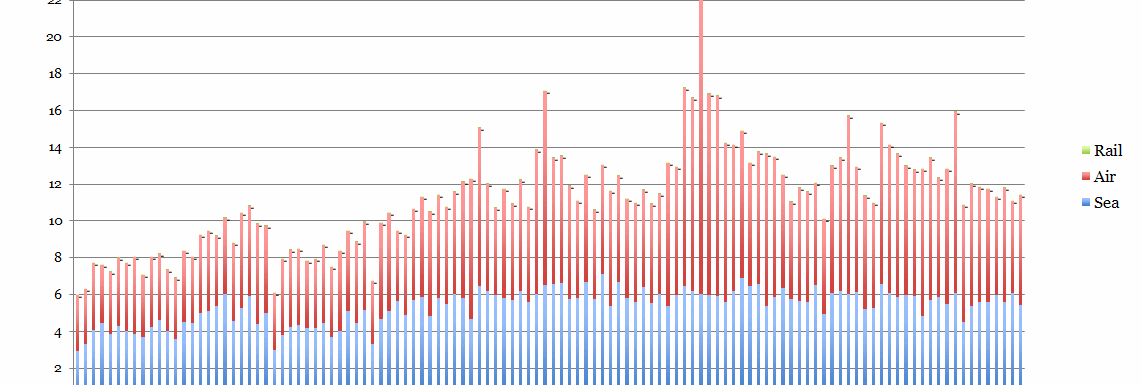
Summary
The chart shows that the value of sea freight is at a stable level, remaining fairly constant over the last decade. As might be expected for goods travelling such a distance, rail freight is negligible as a proportion of total goods leaving the UK for the rest of the non-EU world. The chart shows not just the dominance of air freight as the means by which the UK exports to the rest of the world, but also how the air freight industry is capable of greater sensitivity to export demand.
What does the chart show?
The chart shows total nominal value of goods leaving the UK via air, sea and rail freight and their respective proportions. The blue bars represent sea freight and the red bars, air freight. Rail freight is in green but is barely visible as the values are so low. Goods travelling by road are included in rail freight as they leave the UK and cross the channel via the rail tunnel. The data is monthly from the beginning of 2007 until August 2016 and in billions of pounds sterling.
Why is the chart interesting?
The chart shows that on the whole, the value of goods leaving the UK by sea has remained fairly constant. Sea freight is remarkably stable, deviating far less from its average value of £5.2bn than air freight which fluctuates dramatically. This is likely reflective of sea freight being the logical transport choice for bulky, non-perishable goods whose production and export is planned longer in advance than goods requiring other transport methods.
The responsiveness of the air freight industry is perhaps one of its greatest strengths as it has the capacity to respond fairly swiftly to volatile demand and this is evidenced in the graph. For example in January 2007 when overall freight value was at its lowest, the percentage of sea freight to air freight was 49.5% to 50.3% respectively. Yet by May 2013 when the total value of goods exported had risen by 273% (£16.3 billion in real terms) this split changed to 27% sea freight to 72% air freight. The recent decision to leave the EU and its implication that the UK intends to trade more globally, will no doubt add to increased demand for airport expansion, despite any potential environmental implications.

